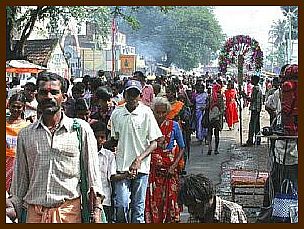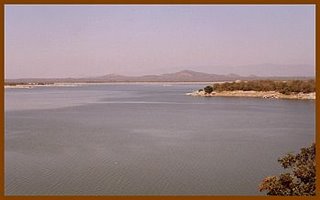
But for now this rather spectacular view of Arunachala.





In the above photograph you can see the beginning of the excavation of the Hotel swimming pool.
For myself I've never equated austerity or suffering as a necessary pre-requisite of spiritual life. Personally I think its excellent that different facilities for visiting pilgrims/tourists now exist at Tiruvannamalai. In this respect its very encouraging that the new Hotel will be introducing such features as an ayurvedic treatment centre at their new Hotel. I will keep you informed as to progress of the construction of Sparsa, Tiruvannamalai.


Outside the same Shrine, Nirudhi Lingam, is a very nice painting of the circumference of Arunachala with all the famous Asta Lingams marked.

In 2006 the Supreme Court in Delhi made a final judgement of the status of land around Arunachala. As a consequence of the judgement, construction has started in many places by the side of the girivalam road. All construction was actually halted for years whilst land owners waited to hear the definitive Supreme Court ruling. You can read the Judgement in full to find out more about the future development of this area.



















Below is the operating theatre and the gent at the right (in the yellow shirt) of the photograph is Srinivasan who works at the Karuna Society at Puttaparthi but has been working as locum for the last week at Tiruvannamalai until the organisation's veterinary doctor arrives from Holland. The man on the left is Venkateshan and is a permanent employee at the Animal Centre.

Below, some nice puppies waiting for adoption. The organisation does not plan on acting as an adoption agency for puppies; but in the case of emergencies is always prepared to help out. In the past week already 7 dogs have been adopted by local residents in the area.

Many saints have well known connections with animals. At the reception centre of the facility there are pictures of Sri Sathya Sai Baba with his elephant Sai Gita, Yogi Ramsuratkumar with a dog, Sri Ramana Maharshi with Lakshmi the Cow, and a now deceased local female saint of this area who was known to love animals.

The organisation has already done sterling work in stopping the cruel street killings of stray dogs by people hired by the Muncipality and paid per 'kill'. Now that sad chapter is over, the organisation hopes that by performing sterlisation operations the stray and street dog population will be humanely maintained at an acceptable number.


Each month in our newsletter, Arunachala Grace News, we write a report on an ayurvedic herb or shrub found on Arunachala. In the next issue of the Newsletter we will be featuring; Cynodon Dactylon (Tamil name: Arugampul).
Cynodon Dactylon is a hardy perennial grass which flowers throughout the year, grows abundantly all over Arunachala and has remarkable healing properties.
To subscribe to the free monthly Arunachala Grace News please go to the subscribe facility under the email banner on the left hand column of this Blog.




